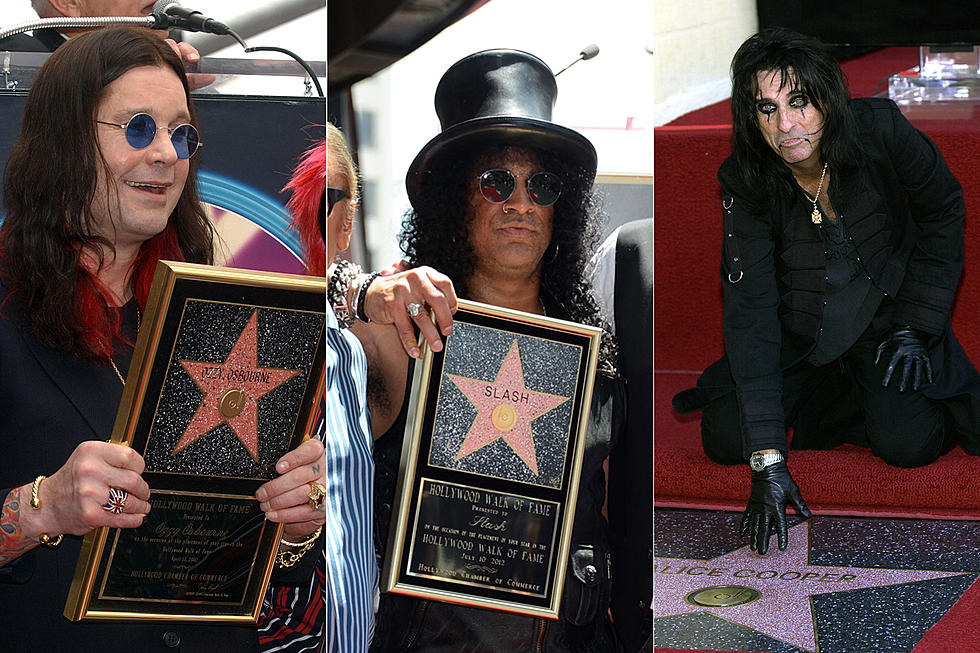
The Story of Bryan Adams’ Only No. 1 Album, ‘Reckless’
To American listeners, Bryan Adams seemed to arrive out of the blue with 1983's Cuts Like a Knife LP, but he'd actually been around for quite awhile; in fact, Knife was his third full-length solo release. So after that album broke him through to the big time, spinning off a trio of U.S. Top 40 singles and going platinum on either side of the American-Canadian border, he didn't panic when it came time to put together a follow-up.
Instead, Adams focused harder than ever on delivering a set of songs that could conquer pop and rock radio, scheduling a lengthy period of woodshedding with his songwriting partner Jim Vallance. "Bryan and I got together in my basement studio every day for a year," Vallance told Guitar World. "Noon till midnight. Some days were more productive than others, but we always put in the time and did the work."
Adams and Vallance were well acquainted with the rigors of writing hit songs; while Adams may have had only a few big hits of his own under his belt, the duo had started out as staff songwriters, and landed cuts with other artists before completing Adams' self-titled debut in 1980. As work started on what would become his fourth LP, Adams and Vallance continued shopping songs to other acts, some of which were accepted ("Teacher, Teacher," recorded by .38 Special) and some that weren't ("Run to You," rejected by Blue Oyster Cult before being repurposed as an Adams track).
That doesn't mean Adams was exactly nonchalant about topping his first big international success. "I was struggling with the idea of doing a record that would outdo Cuts Like a Knife," Adams later admitted. "I was very demanding with those working around me, the band, the engineer, [producer] Bob Clearmountain. I nearly knocked myself out doing it. You just get so into it that nothing else exists. I knew that I'd taxed everybody's personalities far more than I should have, and I lost a lot of innocence on that record. People saw a different side of me, more brutal. I just went at it with fangs open."
"I didn't care how many times we had to rerecord it, or rewrite it, I just wanted it to be a great listen from start to finish," he told Mixdown in 2002. "I remember waking up on the sofa in the control room one day in New York City and everybody had left me in the studio. We were sharing the studio with another act that was recording in the daytime, and the session was about to get set up – and all I could think was, it's 8 in the morning, and I wanted to keep recording. 'Where the hell is everybody?'"
Keeping late hours wasn't the only problem the musicians had to deal with while recording. The basic tracks for the album were cut at Little Mountain, a Canadian studio owned by Bruce Fairbairn and Bob Rock – a place Clearmountain described as "almost like a low-budget studio" – and given that it served as home to a lot of jingle recordings, it wasn't really set up for the big rock drum sound the songs needed. Forced to improvise, Clearmountain told Sound on Sound that he ended up using the building's garage.
"I went in there and clapped my hands and said, 'Wow, can't we record the drums in here?'" he recalled. "As it turned out, we decided it would be kind of awkward to have Mickey the drummer in a whole different room, so I set up the kit right in front of the door, got these gobos on which one side was a real hard wood surface, and made a big funnel-shaped device that focused the sound through the door into the loading bay. I put a couple of room mics in there, and that's how we got our big rock drum sound. The funny thing is, someone apparently measured exactly how we'd set the drums up, and when Aerosmith's records and other rock records were done at Little Mountain they'd set everything up exactly the same way. So, if you listen to some of those Aerosmith records, the drums sound almost identical to the ones on the Cuts Like a Knife and Reckless albums."
Watch Bryan Adams Perform 'Run to You'
Hard as Adams and his team worked on the recordings, the songs deserved it. The resulting collection, titled Reckless and released on Nov. 5, 1984, offered a seemingly endless stream of singles for pop and rock radio, starting with the Top 10 "Run to You" and continuing through "Somebody" (No. 11), "Heaven" (No. 1), "Summer of '69" (No. 5), "One Night Love Affair" (No. 13) and a duet with Tina Turner, "It's Only Love" (No. 15).
It didn't matter that some of the songs had disparate origins – that "Run to You" had been intended for Blue Oyster Cult, or that "Heaven" had originally surfaced on the soundtrack to the forgettable 1983 movie A Night in Heaven. During a year dotted with massive musical breakthroughs from a wide variety of artists, Adams went toe-to-toe with some of the biggest hit records of the year.
For a time, Adams' hot streak was mainly confined to the U.S. and Canada. In America, for example, Reckless broke the Top 10 of Billboard's Top 200 Albums chart in early 1985 before dropping back out – only to return later in the year as single after single hit heavy rotation, finally reaching No. 1 in August. But a newly resurgent Tina Turner, returning the favor that longtime fan Adams afforded her when he asked her to duet on "It's Only Love," ultimately helped the album catch on in Europe when she asked him to be her support act for the overseas leg of her 1985 tour.
"I’ll be forever grateful to her for taking me on tour with her in Europe after that because it broke the album," Adams said later, recalling that his European label had "kind of shelved" Reckless despite its huge success in the U.S. "'Summer of ‘69' never got any traction, anywhere, except in America and Canada. Ten years later in 1992 or 1993, sometime after the release of the So Far, So Good album I started getting people calling and saying, 'You know, I just heard ''69' is number one in Holland this week!' You know? This is, like, maybe 10 years after it was released."
Reckless would prove a difficult act to follow for Adams, who found himself strapped to a touring and publicity treadmill that powered on for years after the album's release. He risked burnout, and so did his audience; by the time he returned in 1987 with his fifth LP, Into the Fire, he was greeted with far more resistance at radio, where the album generated a comparatively weak trio of Top 40 singles, and the record's platinum sales paled in comparison to its predecessor's blockbuster success.
For a few years, it looked like 1984-85 would prove to be the apex of Adams' career, with Reckless looming out of reach over subsequent efforts – but as we know now, that brief lull was just the calm before the storm that arrived with 1991's Waking Up the Neighbours, which topped the charts all over the world off the back of its airplay-hogging lead single and Robin Hood: Prince of Thieves soundtrack anthem, "(Everything I Do) I Do It for You." Still, even if Adams' career has kept right on going in the years since Reckless, the album remains a pivotal turning point – the album that took him from rock star to superstar, and a collection of songs that still holds up today.
"I recorded and rerecorded and recorded and rerecorded until I thought it was as close to being as good a record as it could possibly be," Adams told the Aquarian. "I can even remember when the final fader went down on 'Summer of ‘69,' I still thought we hadn’t quite got it. I listen to it now and I don’t know what I was wondering about because it sounds right to me. I think if you’re complacent with things, it’s not the way to be when you make records. You always have to second guess yourself quite a bit."
Top 100 '80s Rock Albums
More From KQCL Power 96










